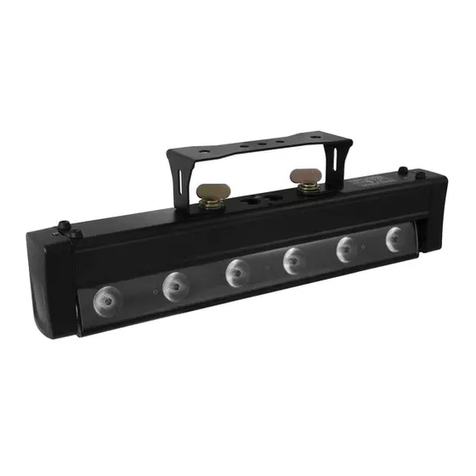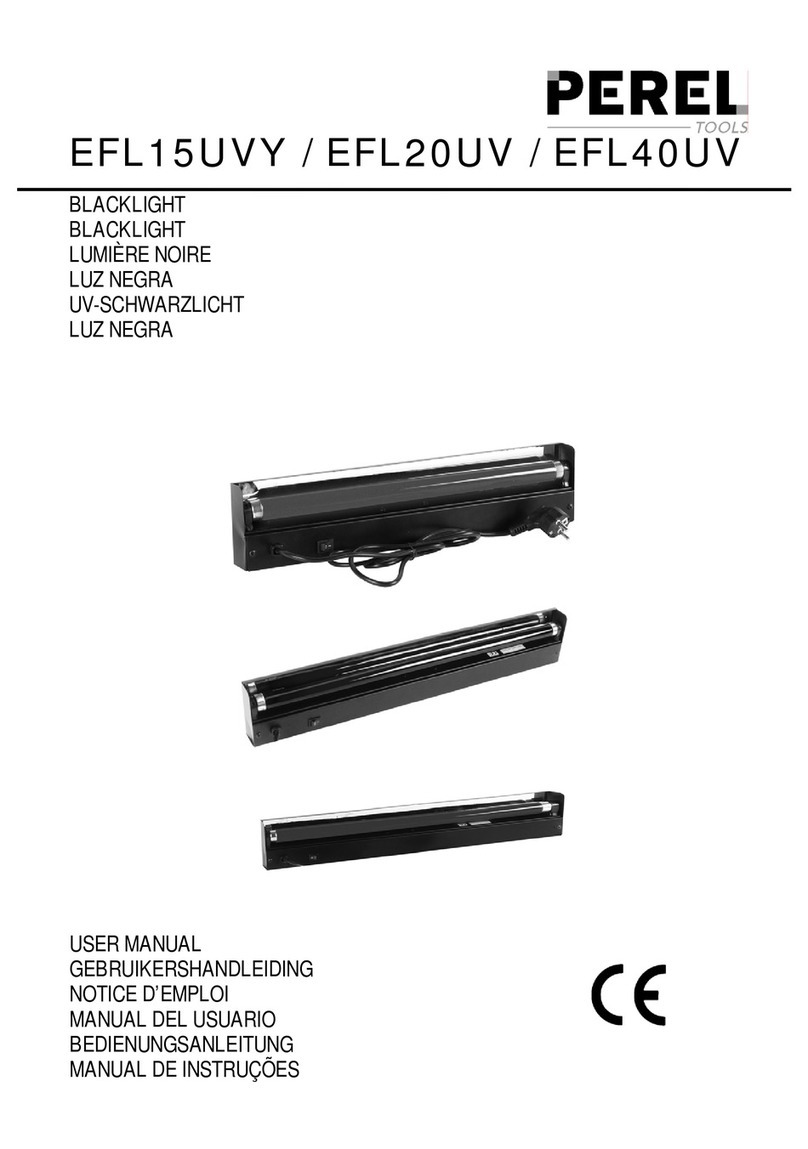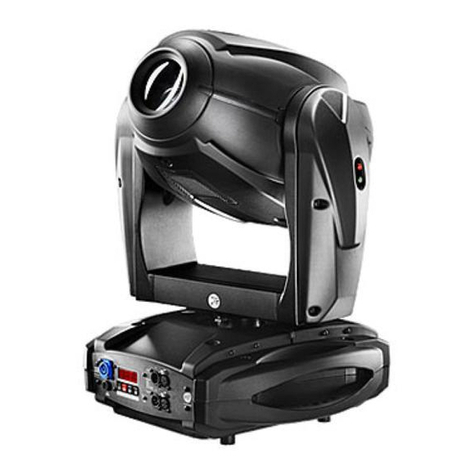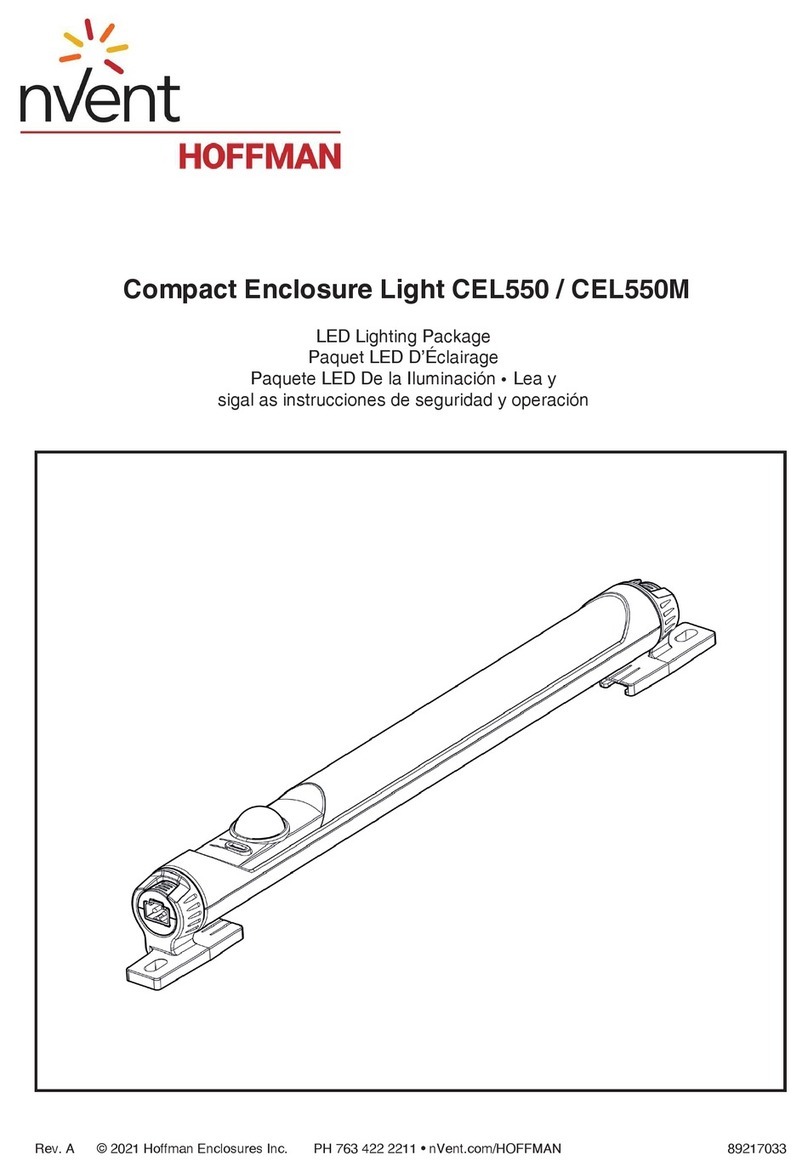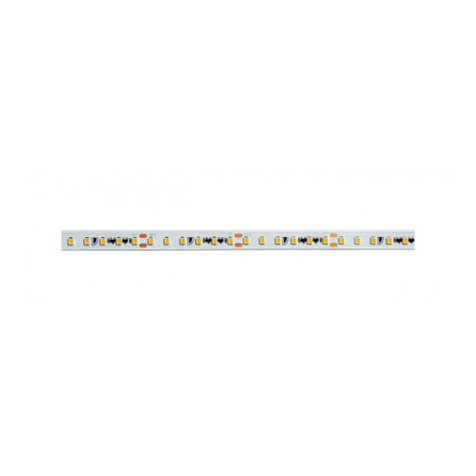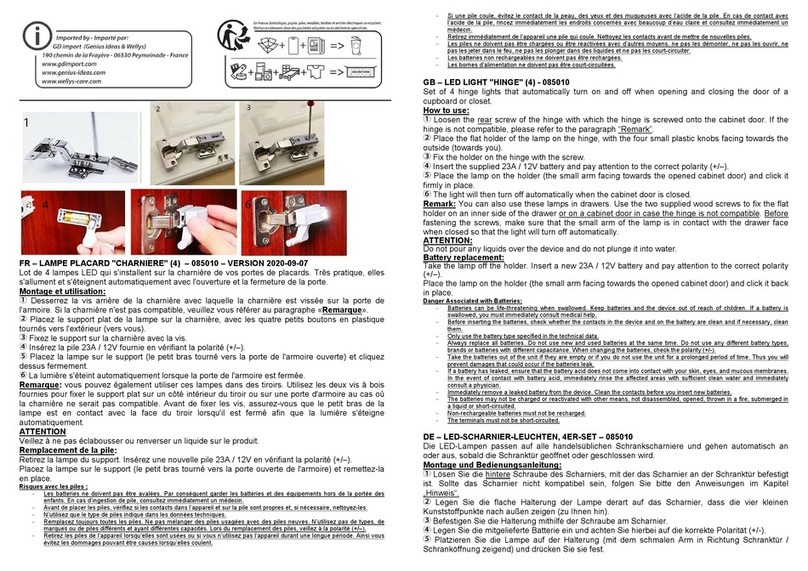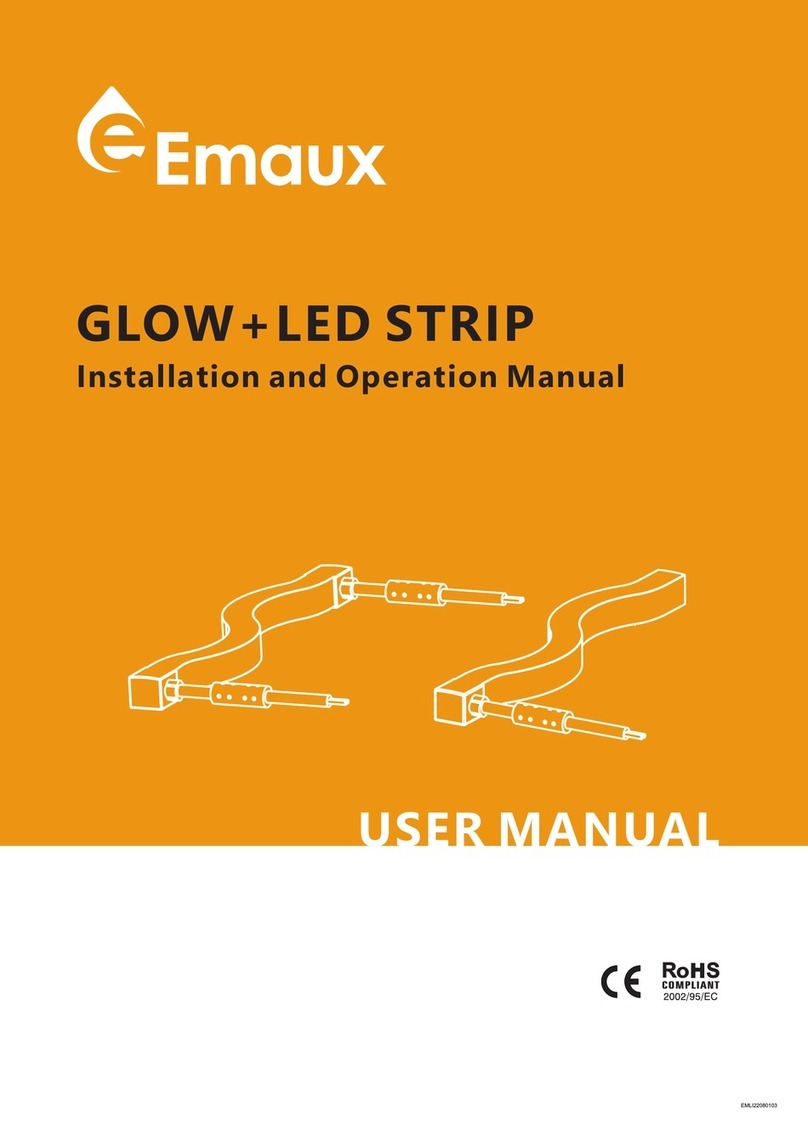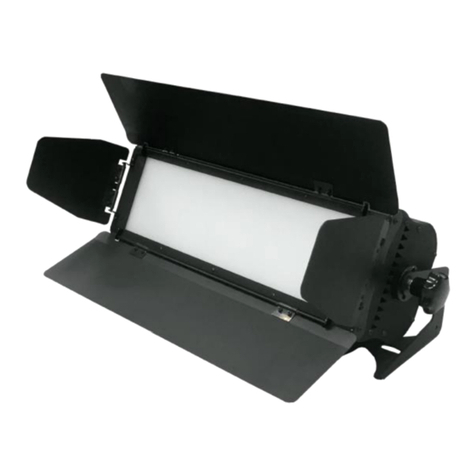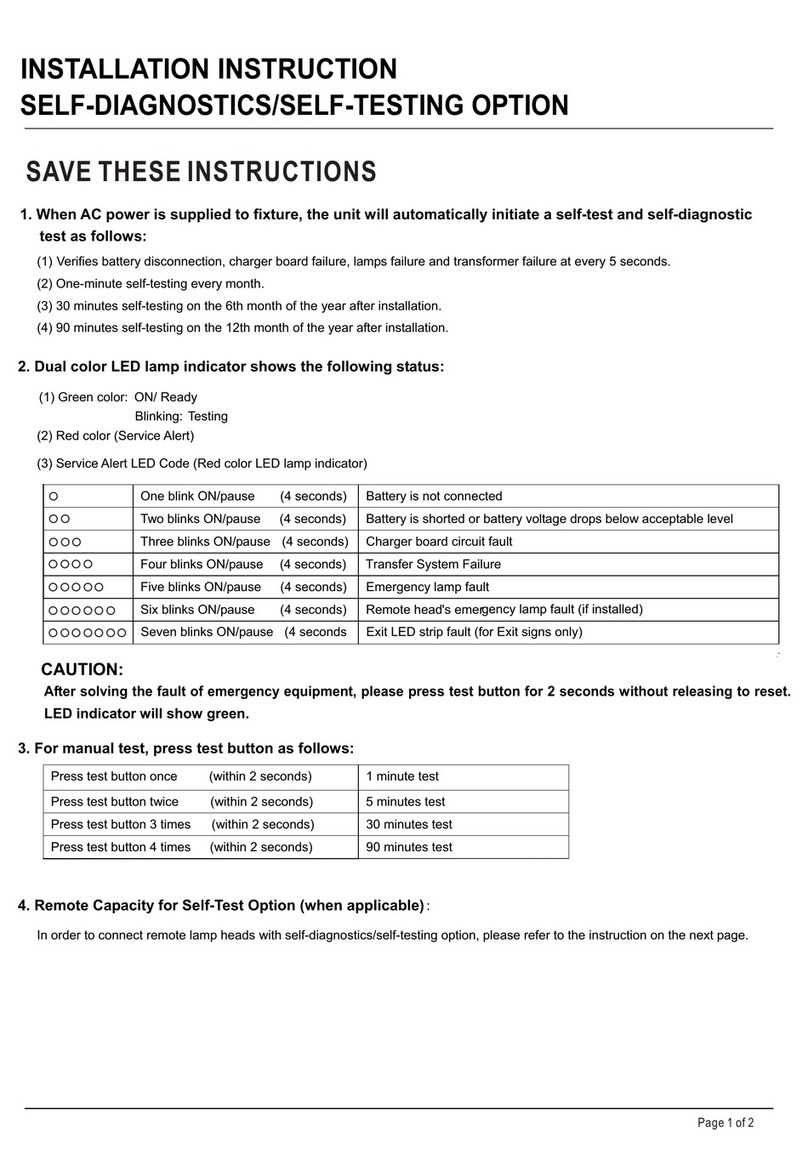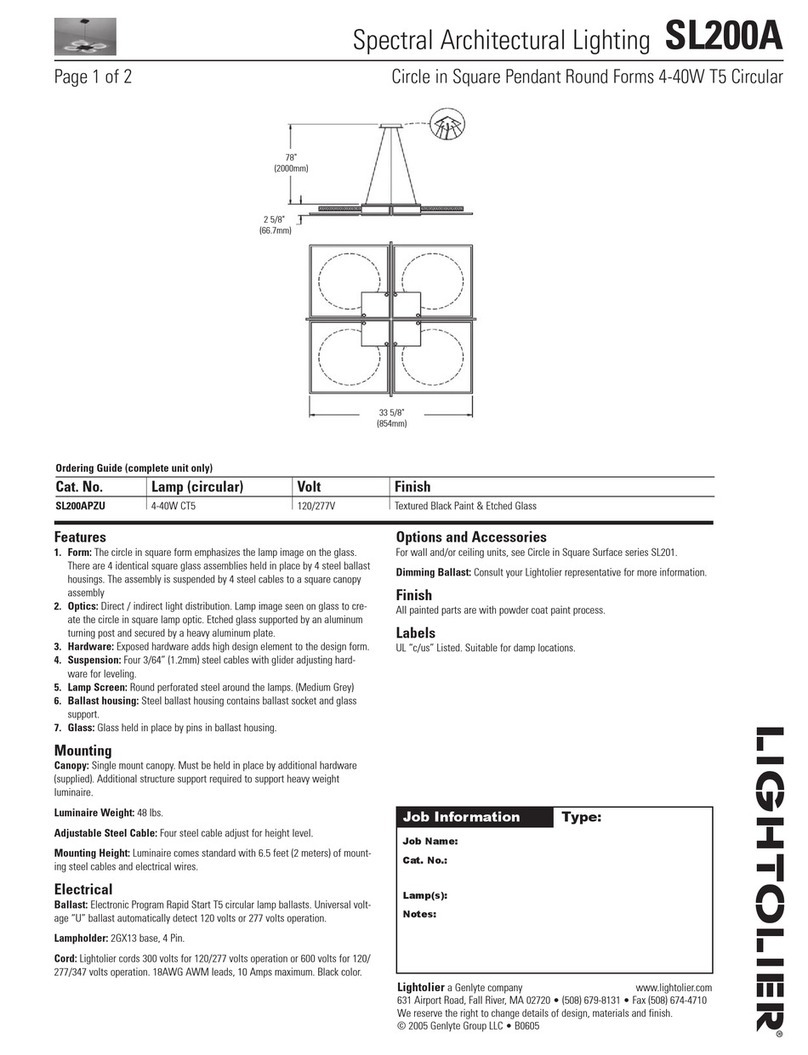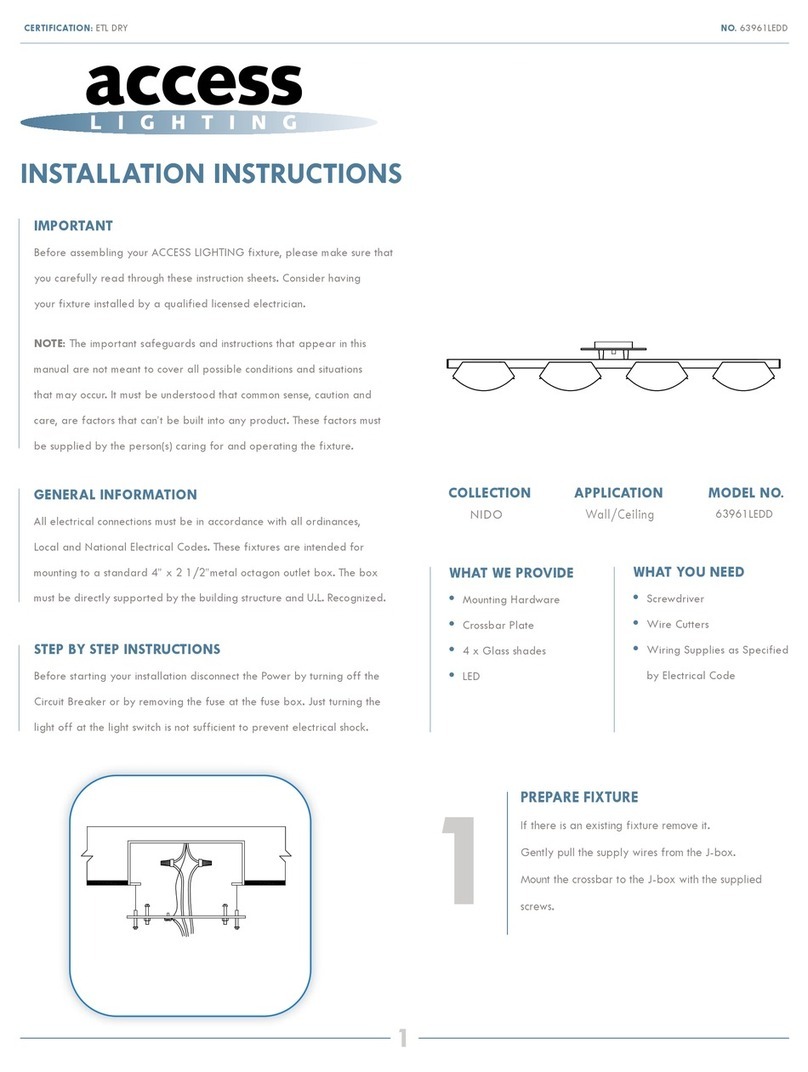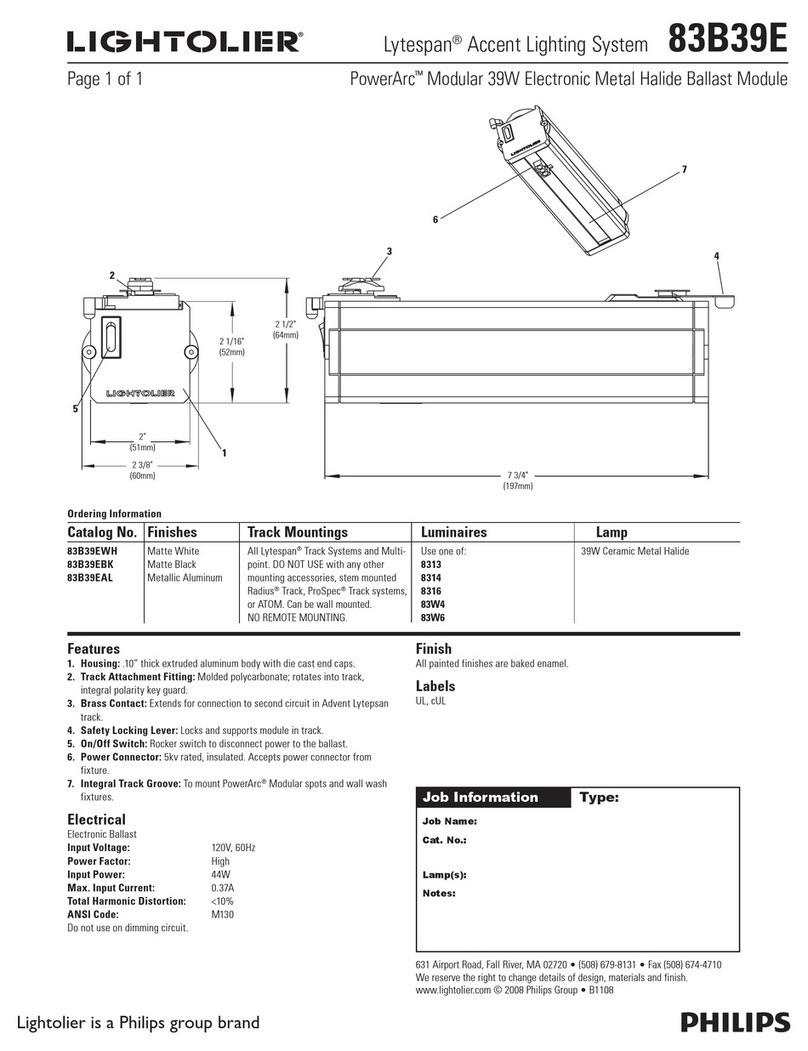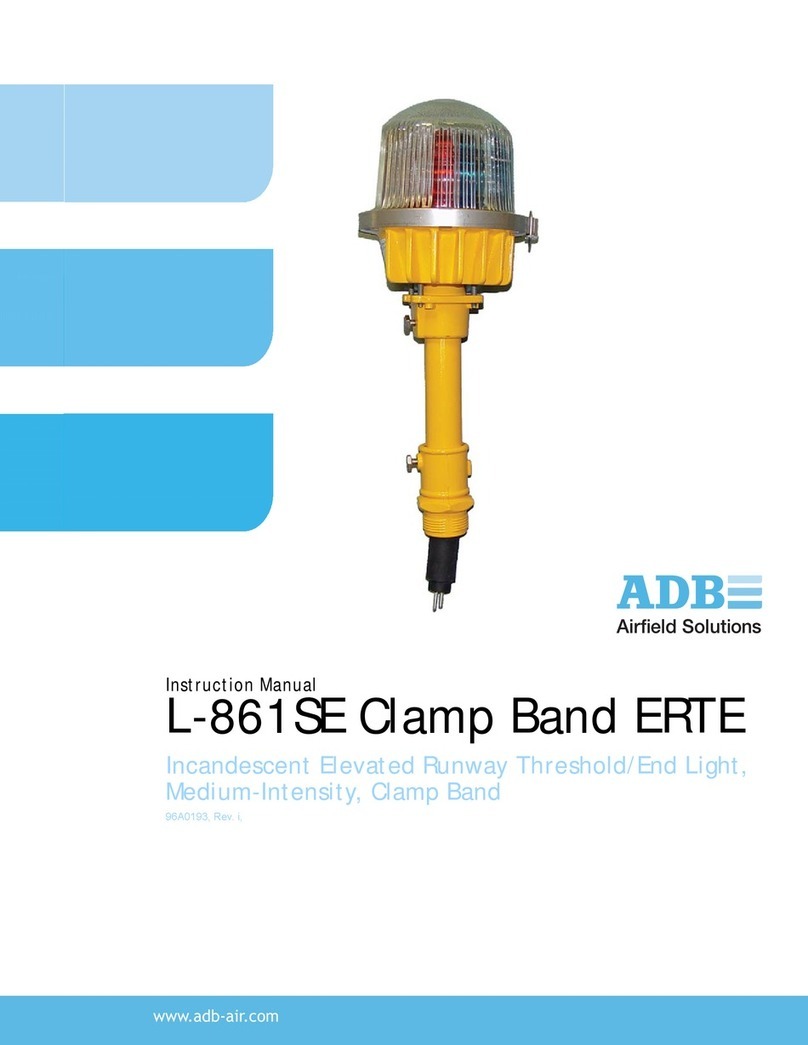SICK deTec2 Core User manual

OPERATING INSTRUCTIONS
deTec2 Core HG
Safety light curtain

Described product
deTec2 Core HG
Manufacturer
SICK AG
Erwin-Sick-Str. 1
79183 Waldkirch
Germany
Legal information
This work is protected by copyright. Any rights derived from the copyright shall be
reserved for SICK AG. Reproduction of this document or parts of this document is
only permissible within the limits of the legal determination of Copyright Law. Any modi‐
fication, abridgment or translation of this document is prohibited without the express
written permission of SICK AG.
The trademarks stated in this document are the property of their respective owner.
© SICK AG. All rights reserved.
Original document
This document is an original document of SICK AG.
2O P E R A T I N G I N S T R U C T I O N S | deTec2 Core HG 8021979/1GWF/2022-11-11 | SICK
Subject to change without notice

Contents
1 About this document........................................................................ 6
1.1 Purpose of this document........................................................................ 6
1.2 Scope......................................................................................................... 6
1.3 Target groups of these operating instructions........................................ 6
1.4 Additional information.............................................................................. 6
1.5 Symbols and document conventions...................................................... 7
2 Safety information............................................................................ 8
2.1 General safety notes................................................................................ 8
2.2 Intended use............................................................................................. 8
2.3 Inappropriate use..................................................................................... 9
2.4 Requirements for the qualification of personnel.................................... 9
3 Product description........................................................................... 10
3.1 Structure and function............................................................................. 10
3.2 Product characteristics............................................................................ 11
3.2.1 Device overview....................................................................... 11
3.2.2 Hardened front screen............................................................ 11
3.2.3 Absence of blind zones........................................................... 11
3.2.4 Automatic calibration of the protective field width................ 11
3.2.5 Alignment aid........................................................................... 12
3.2.6 Status indicators...................................................................... 12
3.3 Example applications............................................................................... 13
4 Project planning................................................................................ 15
4.1 Manufacturer of the machine.................................................................. 15
4.2 Operating entity of the machine.............................................................. 15
4.3 Design........................................................................................................ 15
4.3.1 Scanning range and protective field width............................. 16
4.3.2 Minimum distance from the hazardous point....................... 17
4.3.3 Minimum distance to reflective surfaces............................... 19
4.3.4 Protection against interference from systems in close prox‐
imity to each other................................................................... 21
4.4 Integration in electrical control................................................................ 22
4.4.1 Restart interlock...................................................................... 24
4.4.2 External device monitoring (EDM).......................................... 24
4.4.3 Connection diagrams.............................................................. 25
4.5 Testing plan............................................................................................... 25
4.5.1 Test rod check.......................................................................... 26
4.5.2 Visual check of the machine and the protective device........ 29
5 Mounting............................................................................................. 30
5.1 Unpacking.................................................................................................. 30
5.2 Installation................................................................................................ 30
CONTENTS
8021979/1GWF/2022-11-11 | SICK O P E R A T I N G I N S T R U C T I O N S | deTec2 Core HG 3
Subject to change without notice

5.2.1 Mounting the QuickFix bracket............................................... 33
5.2.2 Mounting the FlexFix bracket.................................................. 35
5.2.3 Mounting the Compact FlexFix bracket.................................. 38
5.2.4 Mounting the flat mount bracket............................................ 40
5.2.5 Mounting the swivel mount bracket....................................... 41
5.2.6 Mounting the upgrade bracket............................................... 44
6 Electrical installation........................................................................ 45
6.1 Safety......................................................................................................... 45
6.2 System connection (M12, 5-pin)............................................................. 46
6.3 System connection via connection cable (M12, 5-pin to 8-pin)............ 47
7 Commissioning.................................................................................. 48
7.1 Overview.................................................................................................... 48
7.2 Switching on.............................................................................................. 48
7.3 Sender and receiver alignment................................................................ 48
7.3.1 Aligning the sender and receiver............................................ 49
7.3.2 Alignment with the QuickFix bracket...................................... 50
7.3.3 Alignment with the FlexFix bracket or with the upgrade
bracket...................................................................................... 50
7.3.4 Alignment with the Compact FlexFix bracket......................... 51
7.3.5 Alignment with the swivel mount bracket.............................. 52
7.3.6 Indication of the alignment quality......................................... 53
7.4 Check during commissioning and modifications.................................... 53
8 Operation............................................................................................ 54
8.1 Regular thorough check........................................................................... 54
9 Maintenance...................................................................................... 55
9.1 Regular cleaning....................................................................................... 55
9.2 Regular thorough check........................................................................... 56
10 Troubleshooting................................................................................. 57
10.1 Safety......................................................................................................... 57
10.2 Diagnostic LEDs........................................................................................ 57
10.2.1 Fault indicators........................................................................ 57
11 Decommissioning............................................................................. 59
11.1 Disposal..................................................................................................... 59
12 Technical data.................................................................................... 60
12.1 Data sheet................................................................................................. 60
12.2 Response time.......................................................................................... 62
12.3 Power consumption.................................................................................. 62
12.4 Length of cable......................................................................................... 63
12.5 Table of weights........................................................................................ 63
12.6 Dimensional drawings.............................................................................. 64
CONTENTS
4O P E R A T I N G I N S T R U C T I O N S | deTec2 Core HG 8021979/1GWF/2022-11-11 | SICK
Subject to change without notice

13 Ordering information........................................................................ 65
13.1 Scope of delivery....................................................................................... 65
13.2 Ordering information................................................................................. 65
14 Accessories........................................................................................ 66
14.1 Brackets.................................................................................................... 66
14.2 Mounting accessories.............................................................................. 69
14.3 Weld spark guard...................................................................................... 69
14.4 Connectors................................................................................................ 71
14.5 Alignment aid............................................................................................ 72
14.6 Deflector mirrors....................................................................................... 72
14.6.1 Function and use..................................................................... 72
14.6.2 Mounting.................................................................................. 72
14.6.3 Change in scanning range using deflector mirrors................ 73
14.6.4 Deflector mirror PNS75 - ordering information...................... 73
14.6.5 Deflector mirror PNS125 - ordering information................... 73
14.7 Mirror columns.......................................................................................... 74
14.8 Device columns......................................................................................... 74
14.9 Cleaning agent.......................................................................................... 74
14.10 Test rods.................................................................................................... 75
15 Annex.................................................................................................. 76
15.1 Conformities and certificates................................................................... 76
15.1.1 EU declaration of conformity................................................... 76
15.1.2 UK declaration of conformity.................................................. 76
15.2 Note on standards.................................................................................... 76
15.3 Checklist for initial commissioning and commissioning........................ 78
16 List of figures..................................................................................... 79
17 List of tables....................................................................................... 80
CONTENTS
8021979/1GWF/2022-11-11 | SICK O P E R A T I N G I N S T R U C T I O N S | deTec2 Core HG 5
Subject to change without notice

1 About this document
1.1 Purpose of this document
These operating instructions contain information required during the life cycle of the
safety light curtain.
These operating instructions are available to all those who work with the safety light
curtain.
Please read these operating instructions carefully and make sure that you understand
the content fully before working with the safety light curtain.
1.2 Scope
This document applies to the following products:
•Product code: deTec2 Core HG
•“Operating instructions” type label entry: 8021977
Document identification
Document part number:
•This document: 8021979
•Available language versions of this document: 8021977
You can find the current version of all documents at www.sick.com.
1.3 Target groups of these operating instructions
Some sections of these operating instructions are intended for certain target groups.
However, the entire operating instructions are relevant for intended use of the product.
Table 1: Target groups and selected sections of these operating instructions
Target group Sections of these operating instructions
Project developers (planners, developers,
designers)
"Project planning", page 15
"Technical data", page 60
"Accessories", page 66
Installers "Mounting", page 30
Electricians "Electrical installation", page 45
Safety experts (such as CE authorized repre‐
sentatives, compliance officers, people who
test and approve the application)
"Project planning", page 15
"Commissioning", page 48
"Technical data", page 60
"Checklist for initial commissioning and com‐
missioning", page 78
Operators "Operation", page 54
"Troubleshooting", page 57
Maintenance personnel "Maintenance", page 55
"Troubleshooting", page 57
1.4 Additional information
www.sick.com
The following information is available on the Internet:
•Data sheets and application examples
•CAD data and dimensional drawings
1 ABOUT THIS DOCUMENT
6O P E R A T I N G I N S T R U C T I O N S | deTec2 Core HG 8021979/1GWF/2022-11-11 | SICK
Subject to change without notice

•Certificates (e.g. EU declaration of conformity)
•Guide for Safe Machinery Six steps to a safe machine
1.5 Symbols and document conventions
The following symbols and conventions are used in this document:
Safety notes and other notes
DANGER
Indicates a situation presenting imminent danger, which will lead to death or serious
injuries if not prevented.
WARNING
Indicates a situation presenting possible danger, which may lead to death or serious
injuries if not prevented.
CAUTION
Indicates a situation presenting possible danger, which may lead to moderate or minor
injuries if not prevented.
NOTICE
Indicates a situation presenting possible danger, which may lead to property damage if
not prevented.
NOTE
Indicates useful tips and recommendations.
Instructions to action
bThe arrow denotes instructions to action.
1. The sequence of instructions for action is numbered.
2. Follow the order in which the numbered instructions are given.
✓The check mark denotes the result of an instruction.
LED symbols
These symbols indicate the status of an LED:
oThe LED is off.
ÖThe LED is flashing.
OThe LED is illuminated continuously.
Sender and receiver
These symbols indicate the sender and receiver of the device:
sThe symbol indicates the sender.
rThe symbol indicates the receiver.
ABOUT THIS DOCUMENT 1
8021979/1GWF/2022-11-11 | SICK O P E R A T I N G I N S T R U C T I O N S | deTec2 Core HG 7
Subject to change without notice

2 Safety information
2.1 General safety notes
DANGER
The product can not offer the expected protection if it is integrated incorrectly.
bPlan the integration of the product in accordance with the machine requirements
(project planning).
bImplement the integration of the product in accordance with the project planning.
DANGER
Death or severe injury due to electrical voltage and/or an unexpected startup of the
machine
bMake sure that the machine is (and remains) disconnected from the voltage
supply during mounting and electrical installation.
bMake sure that the dangerous state of the machine is and remains switched off.
DANGER
Improper work on the product
A modified product may not offer the expected protection if it is integrated incorrectly.
bApart from the procedures described in this document, do not repair, open, manip‐
ulate or otherwise modify the product.
DANGER
Risk of injury due to damage to the front screen
The front screen is made of glass. Glass splinters or damage can change the optical
characteristics or lead to injury.
bReplace the device if the front screen is scratched or damaged.
2.2 Intended use
The deTec2 Core HG safety light curtain is an electro-sensitive protective device (ESPE)
and is suitable for the following applications:
•Hazardous point protection
•Access protection
•Hazardous area protection
The product may be used in safety functions.
The deTec2 Core HG safety light curtain must only be used within the limits of the
prescribed and specified technical data and operating conditions at all times.
Any instance of improper use, incorrect modification, or manipulation of the deTec2
Core HG safety light curtain shall void any warranty provided by SICK AG; furthermore,
SICK AG shall not accept any responsibility or liability for any resulting damage and
consequential damage.
2 SAFETY INFORMATION
8O P E R A T I N G I N S T R U C T I O N S | deTec2 Core HG 8021979/1GWF/2022-11-11 | SICK
Subject to change without notice

2.3 Inappropriate use
The safety light curtain works as an indirect protective measure and cannot provide
protection from parts thrown out nor from emitted radiation. Transparent objects are
not detected.
Among others, the deTec2 Core HG safety light curtain is not suitable for the following
applications:
•Outdoors
•Underwater
•In explosion-hazardous areas
•At altitudes over 3,000m above sea level
•In environments with increased levels of ionizing radiation
•In environments where glass splinters pose a risk
2.4 Requirements for the qualification of personnel
The safety light curtain must only be configured, installed, connected, commissioned
and serviced by qualified safety personnel.
Project planning
You need safety expertise to implement safety functions and select suitable products
for that purpose. You need expert knowledge of the applicable standards and regula‐
tions.
Mounting, electrical installation and commissioning
You need suitable expertise and experience. You must be able to assess if the machine
is operating safely.
Operation and maintenance
You need suitable expertise and experience. You must be instructed in machine oper‐
ation by the machine operator. For maintenance, you must be able to assess if the
machine is operating safely.
SAFETY INFORMATION 2
8021979/1GWF/2022-11-11 | SICK O P E R A T I N G I N S T R U C T I O N S | deTec2 Core HG 9
Subject to change without notice

3 Product description
3.1 Structure and function
Overview
The deTec2 Core HG safety light curtain is an electro-sensitive protective device (ESPE)
consisting of a sender and receiver.
A series of parallel infrared light beams forms a protective field between sender and
receiver that protects the hazardous area (hazardous point, access, and hazardous
area protection). When one or more beams are completely interrupted, the safety light
curtain reports the interruption in the light path to the secure output signal switching
devices (OSSDs) by a signal change. The machine or its control must safely analyze the
signals (for example using a safe control or safety relays) and stop the dangerous state.
Sender and receiver automatically synchronize themselves optically. An electrical con‐
nection between both components is not required.
r
s
Figure 1: Sender and receiver
Protective field height
The protective field height indicates the range within which the test rod belonging to the
safety light curtain is reliably detected.
Protective field width
The protective field width is the dimension of the light path between sender and
receiver. The maximum protective field width is limited by the scanning range.
Resolution
The resolution describes the size of the smallest object detected by the safety light
curtain in the protective field. The resolution corresponds to the diameter of the test rod
belonging to the safety light curtain.
The safety light curtain has a resolution of 14 mm. This resolution provides finger
protection.
The safety light curtain has a resolution of 30mm. This resolution provides hand
protection.
3 PRODUCT DESCRIPTION
10 O P E R A T I N G I N S T R U C T I O N S | deTec2 Core HG 8021979/1GWF/2022-11-11 | SICK
Subject to change without notice

Scanning range
The scanning range is the maximum protective field width.
The scanning range is reduced by using deflector mirrors.
The scanning range is reduced by using a weld spark guard.
Further topics
•"Data sheet", page 60
•"Deflector mirrors", page 72
•"Weld spark guard", page 69
3.2 Product characteristics
3.2.1 Device overview
1
2
Figure 2: Device overview
1Sender or receiver
2System connection
3.2.2 Hardened front screen
The front screen of the safety light curtain deTec2 Core HG (hardened glass) has a
high resistance to chemicals and is suitable for environments in which coolants and
lubricants or cleaning agents are used.
A list of all substances that have been tested for compatibility with the device materials
is available from SICK on request.
3.2.3 Absence of blind zones
The design and construction of the safety light curtain extends the protective function
of a device to the end of the housing without any blind spots. The absence of blind
zones reduces the space requirement when integrated in the machine.
3.2.4 Automatic calibration of the protective field width
When switched on, the safety light curtain automatically calibrates to the protective
field width.
PRODUCT DESCRIPTION 3
8021979/1GWF/2022-11-11 | SICK O P E R A T I N G I N S T R U C T I O N S | deTec2 Core HG 11
Subject to change without notice

3.2.5 Alignment aid
Alignment quality LEDs are installed in the receiver of the safety light curtain. To
perform a simple alignment of the receiver, the alignment quality LEDs indicate the
alignment quality once the safety light curtain has been switched on.
3.2.6 Status indicators
Overview
The sender and receiver LEDs indicate the operational status of the safety light curtain.
Sender displays
1PWR
2ERR
Figure 3: Sender displays
2 LEDs on the sender indicate the operational status:
Position LED color Display Labeling
1Yellow Status indicator PWR
2Red Fault indicator ERR
Receiver displays
1OSSD
2ERR
3
1234
Figure 4: Receiver displays
6 LEDs on the receiver indicate the operational status:
3 PRODUCT DESCRIPTION
12 O P E R A T I N G I N S T R U C T I O N S | deTec2 Core HG 8021979/1GWF/2022-11-11 | SICK
Subject to change without notice

Position LED color Display Labeling
1Red/green OSSD status OSSD
2Red Fault indication ERR
3Blue Alignment quality 1, 2, 3, 4
The blue alignment quality light emitting diodes in combination with the red flashing
ERR LED also denote faults.
Further topics
•"Diagnostic LEDs", page 57
3.3 Example applications
Figure 5: Hazardous point protection
Figure 6: Access protection
PRODUCT DESCRIPTION 3
8021979/1GWF/2022-11-11 | SICK O P E R A T I N G I N S T R U C T I O N S | deTec2 Core HG 13
Subject to change without notice

Figure 7: Hazardous area protection
3 PRODUCT DESCRIPTION
14 O P E R A T I N G I N S T R U C T I O N S | deTec2 Core HG 8021979/1GWF/2022-11-11 | SICK
Subject to change without notice

4 Project planning
4.1 Manufacturer of the machine
The manufacturer of the machinery must carry out a risk assessment and apply appro‐
priate protective measures. Further protective measures may be required in addition to
the product.
The product must not be tampered with or changed, except for the procedures descri‐
bed in this document.
The product must only be repaired by the manufacturer of the product or by someone
authorized by the manufacturer. Improper repair can result in the product not providing
the expected protection.
4.2 Operating entity of the machine
Changes to the electrical integration of the product in the machine controller and
changes to the mechanical mounting of the product necessitate a new risk assess‐
ment. The results of this risk assessment may require the entity operating the machine
to meet the obligations of a manufacturer.
The product must not be tampered with or changed, except for the procedures descri‐
bed in this document.
The product must only be repaired by the manufacturer of the product or by someone
authorized by the manufacturer. Improper repair can result in the product not providing
the expected protection.
4.3 Design
Overview
This chapter contains important information about the design.
Important information
DANGER
Hazard due to lack of effectiveness of the protective device
Persons and parts of the body to be protected may not be recognized in case of
non-observance.
bMake sure that the following construction requirements are met so that the safety
light curtain can fulfill its protective function.
°Sender and receiver must be arranged such that persons or parts of the body
are reliably detected when they enter the hazardous area.
°Reaching under, over, and around as well as moving the safety light curtain
must be prevented.
°Check whether additional safety measures (e.g. restart interlocking) are nec‐
essary when it is possible for people to be located between the protection
system and the danger point without being detected.
PROJECT PLANNING 4
8021979/1GWF/2022-11-11 | SICK O P E R A T I N G I N S T R U C T I O N S | deTec2 Core HG 15
Subject to change without notice

DANGER
Hazard due to lack of effectiveness of the protective device
Persons and parts of the body to be protected may not be recognized in case of
non-observance.
bMake sure that the optical properties of the front screens of the sender and
receiver are not changed, e.g., by:
°beading water, mist, frost, or ice formation. If applicable, remove films or
other types of contamination, disconnect the voltage supply of the receiver
and then switch it back on.
°Scratches or damage. Replace the device whose front screen is scratched or
damaged.
bMake sure that all reflective surfaces and objects maintain a minimum distance
from the protective field.
bMake sure that no dispersive media (e.g., dust, fog, or smoke) are within the
calculated minimum distance from the protective field.
Further topics
•"Mounting", page 30
4.3.1 Scanning range and protective field width
Important information
DANGER
Hazard due to lack of effectiveness of the protective device
Persons and parts of the body to be protected may not be recognized in case of
non-observance.
bThe safety light curtain can only be mounted to machines on which the protective
field width does not change when the safety light curtain is switched on.
Protective field width
The protective field width is the dimension of the light path between sender and
receiver. The maximum protective field width is limited by the scanning range.
The protective field width is automatically calibrated when the safety light curtain is
switched on during initialization and must not be changed during operation.
Scanning range
The scanning range limits the maximum protective field width. The protective field width
cannot change during operation.
The scanning range is reduced by using deflector mirrors.
The scanning range is reduced by using a weld spark guard.
Further topics
•"Minimum distance to reflective surfaces", page 19
•"Technical data", page 60
•"Deflector mirrors", page 72
•"Weld spark guard", page 69
4 PROJECT PLANNING
16 O P E R A T I N G I N S T R U C T I O N S | deTec2 Core HG 8021979/1GWF/2022-11-11 | SICK
Subject to change without notice

4.3.2 Minimum distance from the hazardous point
Overview
A minimum distance must be maintained between the safety light curtain and the
hazardous point. This distance is required to prevent a person or part of their body from
reaching the hazardous point before the end of the machine’s dangerous state.
Calculation of the minimum distance according to ISO13855
The calculation of the minimum distance is based on international or national stand‐
ards and statutory requirements applicable at the place of installation of the machine.
If the minimum distance is calculated according to ISO13855, then it depends on the
following points:
•Machine stopping time (time interval between triggering the sensor function and
the end of the machine’s dangerous state)
•Response time of the protective device
•Reach or approach speed of the person
•Resolution (detection capability) of the safety light curtain
•Type of approach: orthogonal (at right angles) or parallel
•Parameters specified based on the application
For the USA (scope of OSHA and ANSI), different regulations may apply, e.g.:
a) Laws: Code of Federal Regulations, Title 29 (CFR 29), Part 1910.217
b) Standards: ANSIB11.19
Complementary information
More information is available in the ISO13855 standard and in the Guide for Safe
Machinery.
SICK offers a stopping/run-down time measurement service in many countries.
Further topics
•"Response time", page 62
4.3.2.1 Calculating minimum distance from the hazardous point
Important information
DANGER
Minimum distance from the hazardous point is too small
The dangerous state of the machine may not be stopped or not be stopped in a timely
manner due to a minimum distance that is too small.
bCalculate the minimum distances for the machine in which the safety light curtain
is integrated.
bWhen mounting the safety light curtain, observe the minimum distance.
Approach
The example shows the calculation of the minimum distance in accordance with ISO
13855 for an orthogonal (right-angled) approach to the protective field. A different
calculation may be required depending on the application and the ambient conditions
(e.g., for a protective field parallel to or at any angle to the direction of approach or an
indirect approach).
1. First, calculate S using the following formula:
S = (K × T) + 8 × (d – 14mm)
PROJECT PLANNING 4
8021979/1GWF/2022-11-11 | SICK O P E R A T I N G I N S T R U C T I O N S | deTec2 Core HG 17
Subject to change without notice

Where:
°S =minimum distance in millimeters (mm)
°K = approach speed (stepping and/or gripping speed) of a person or a body
part (mm/s), e.g. 2,000mm/s
°T = machine stopping time + response time of the protective device after
interruption in the light path in seconds (s)
°d = resolution of the safety light curtain in millimeters (mm)
2. If the result S is ≤500mm, then use the determined value as the minimum
distance.
3. If the result S is >500mm, then recalculate S with an approach speed of 1,600
mm/s as follows:
S=1,600mm/s×T+8× (d–14mm)
4. If the new value S is >500mm, then use the newly determined value as the
minimum distance.
5. If the new value S is ≤500mm, then use 500mm.
!
"
§
S
Figure 8: Minimum distance to the hazardous point for orthogonal (rectangular) approach to the
protective field
1Protective field height
2Hazardous point
3Depending on the application and distance, persons must be prevented from standing
behind the protective device.
Example calculation
Machine stopping time = 290ms
Response time after interruption of the light path = 30ms
Resolution of the safety light curtain = 14mm
T = 290ms + 30ms = 320ms = 0.32s
S = 2,000mm/s × 0.32s + 8 × (14mm – 14mm) = 640mm
S >500mm, therefore:
S = 1,600mm/s × 0.32s + 8 × (14mm – 14mm) = 512mm
4 PROJECT PLANNING
18 O P E R A T I N G I N S T R U C T I O N S | deTec2 Core HG 8021979/1GWF/2022-11-11 | SICK
Subject to change without notice

4.3.2.2 Taking reach over into account
In accordance with ISO 13855, it must not be possible to defeat the ESPE. If access to
the hazardous area by reaching over a protective field cannot be prevented, the height
of the protective field and minimum distance of the ESPE must be determined. This is
done by comparing the calculated values based on the possible detection of limbs or
body parts with the values resulting from reaching over the protective field. The greater
value resulting from this comparison must be used.
Figure 9: Representation of the accessibility of ESPE by reaching over. Left: Protective field that
cannot be reached over. Right: Protective field that can be reached over.
4.3.3 Minimum distance to reflective surfaces
Overview
The light beams from the sender may be deflected by reflective surfaces and dispersive
media. This may prevent an object from being detected.
Therefore, all reflective surfaces and objects (e.g. material bins, machine table, etc.)
must maintain a minimum distance (a) from the protective field. This minimum dis‐
tance (a) must be maintained on all sides of the protective field. This applies in
horizontal, vertical and diagonal directions as well as at the end of the safety light
curtain. The same area must be free of dispersive media (e.g., dust, fog, or smoke).
The minimum distance (a) depends on the distance (D) between sender and receiver
(protective field width).
The weld spark guard can influence the optical properties of the safety light curtain,
meaning that reflective surfaces have to observe a larger minimum distance.
rs
D
a
Figure 10: Minimum distance from reflective surfaces
PROJECT PLANNING 4
8021979/1GWF/2022-11-11 | SICK O P E R A T I N G I N S T R U C T I O N S | deTec2 Core HG 19
Subject to change without notice

Important information
DANGER
Hazard due to lack of effectiveness of the protective device
Reflective surfaces and dispersive media can prevent persons or parts of the body to
be protected from being properly reflected and, therefore, remain undetected.
bMake sure that all reflective surfaces and objects maintain a minimum distance
from the protective field.
bMake sure that no dispersive media (e.g., dust, fog, or smoke) are within the
calculated minimum distance from the protective field.
Determining minimum distance from reflective surfaces with automated calibration of
the protective field width
The minimum distance can be determined as follows:
bDetermine the distance between sender and receiver D in meters (m).
bRead the minimum distance a in millimeters (mm) in the graph or calculate using
the respective formula to determine the minimum distance to reflective surfaces:
a [mm]
1100
1000
900
800
700
600
500
400
300
200
100
0,5 1 1,5 2 2,5 3 3,5 4 4,5 5 5,5 6 6,5 7 7,5 8 8,5 9 9,5 10 11 12 D [m]
Figure 11: Graph of minimum distance from reflective surfaces
Table 2: Formula for calculating the minimum distance to reflective surfaces
Distance between sender and
receiver D in m
Calculating the minimum distance to reflective surfaces
a in mm
D ≤3m a = 262mm
D >3m a = tan (5°) × 1,000mm/m × D = 87.49 × 1mm/m × D
Further topics
•"Weld spark guard", page 69
4 PROJECT PLANNING
20 O P E R A T I N G I N S T R U C T I O N S | deTec2 Core HG 8021979/1GWF/2022-11-11 | SICK
Subject to change without notice
Other manuals for deTec2 Core
12
Table of contents
